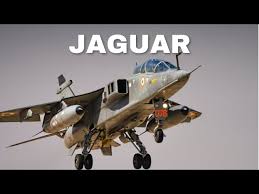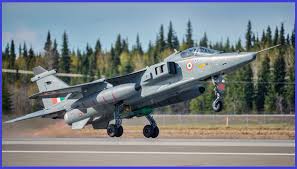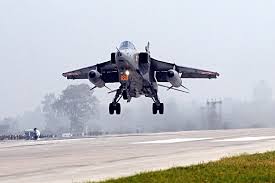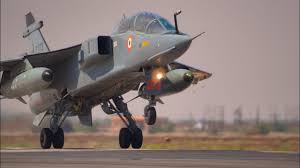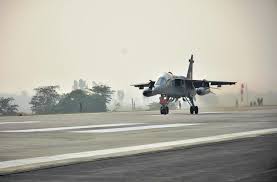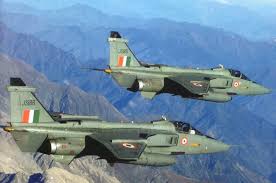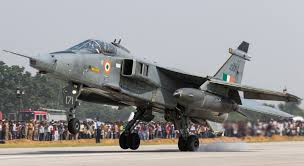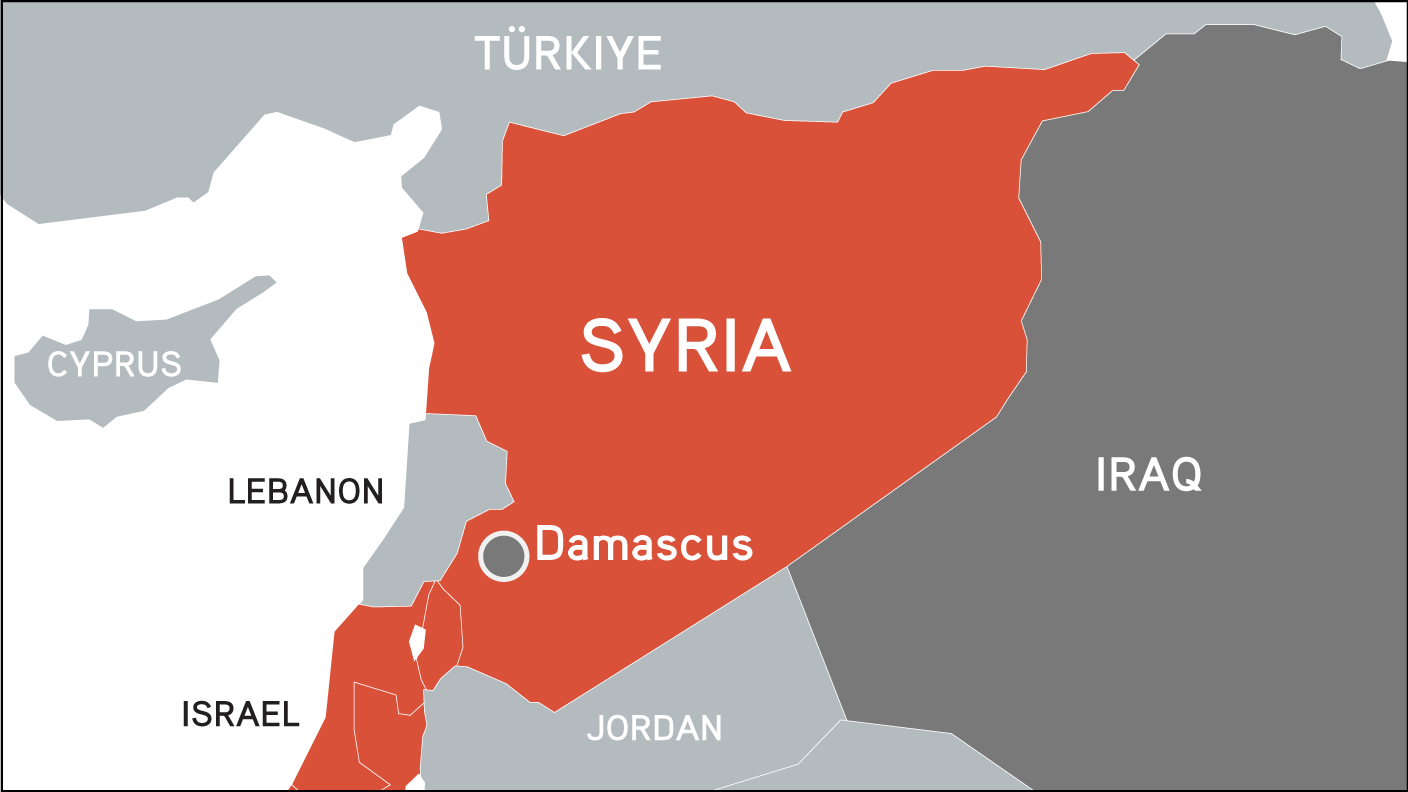
My Article published on the EurasianTimes Website on 08 Dec 24.
The Syrian crisis has escalated significantly, with opposition forces making substantial territorial gains. Syrian rebels have declared that Damascus is “free,” claiming Bashar al-Assad has fled the capital. The rebels earlier claimed to have entered the capital and taken control of the notorious Saydnaya Military Prison north of Damascus. Reportedly, scenes of chaos are unfolding everywhere in Damascus as Syrian rebel forces continue their lightning advance into the capital city.
Syrian Prime Minister Mohammad Ghazi al-Jalali has said, “We are ready to cooperate with any leadership the people choose, offering all possible support to ensure a smooth and systematic transition of government functions and preserve state facilities.” The militant leader of Hayat Tahrir Al-Sham (HTS), the leading group driving the country’s armed opposition, released a statement calling on rebel forces to leave state institutions unharmed.
The Syrian conflict is experiencing a significant shift. This resurgence follows years of relative stalemate since the 2020 Idlib ceasefire. These developments have potential geopolitical ramifications, including challenges for Assad’s allies like Russia and Iran.
Syria’s Rebel Groups. The Syrian opposition consists of a diverse array of rebel groups and factions. These groups have varying degrees of influence and control across Syria. They are often linked to regional sponsors such as Turkey, the U.S., and the Gulf States. Syria’s rebel coalition consists of Islamist and moderate factions who, despite their differences, are united in fighting the Assad regime. The fragmentation among these groups complicates negotiations and challenges international peace efforts.
-
- Hayat Tahrir Al Sham (HTS). The most prominent and formidable group is HTS, also known as the Organisation for the Liberation of the Levant. HTS was founded by Abu Mohammad al-Jolani, a military commander who gained experience as a young fighter for al Qaeda against the United States in Iraq. He created Jabhat al-Nusra, al Qaeda’s Syrian affiliate, and operated the group until a public split with in 2016 over ideological differences and opposition to ISIS. Jolani formed HTS in 2017. Despite Jolani’s effort to distance HTS from al Qaeda and ISIS, the US and other Western countries designated it a terrorist organisation in 2018 and placed a $10 million bounty on him.
-
- The Syrian National Army (SNA). The Syrian National Army (SNA) is a coalition of various Syrian rebel factions, predominantly supported by Turkey, established in 2017. It was formed to consolidate opposition forces and strengthen their position against the Assad regime and Kurdish forces in Syria. The SNA has been active in northern Syria, especially in regions like Afrin and Azaz, and is involved in conflict zones such as Idlib. The group’s formation reflects Turkey’s influence in Syrian affairs and its aim to curb the Kurdish YPG’s influence.
-
- Syrian Democratic Forces. The Syrian Democratic Forces (SDF) is a multi-ethnic alliance of Kurdish, Arab, and other minority groups fighting against ISIS and other jihadist factions in Syria. It was established in 2015 with the support of the U.S. to provide stability in the region and counter ISIS’s control over significant parts of north-eastern Syria. The SDF has played a crucial role in the fight against ISIS.
-
- Free Syrian Army (FSA). The Free Syrian Army (FSA) is a loose coalition of rebel groups that emerged during the early stages of the Syrian civil war in 2011. It initially sought to overthrow the Assad regime but has since evolved into a broad-based opposition force with various factions, ranging from moderate to Islamist groups. The FSA is backed by Turkey, the U.S., and several Gulf states and has played a significant role in the conflict, particularly in the northern and southern regions of Syria. Its influence has fluctuated due to internal divisions and competition from other groups like Hay’at Tahrir al-Sham (HTS).
-
- Druze. In Syria’s south, fighters from the country’s Druze religious minority have also joined the fight. Druze are fighting in the southern city of as-Suwayda, which neighbours the Daraa province, where opposition forces claim to have taken control of Daraa city.
Geopolitical Consequences
Internal Power Struggle. Assad’s core territory is now fragmented. Losing Aleppo and Hama removes critical industrial and economic hubs. With the fall of Damascus, dwindling resources, and troop morale collapsing, Assad’s ability to mount counteroffensives is limited. This creates a vacuum, increasing the likelihood of factional infighting within his loyalist base or between foreign backers like Russia and Iran.
Regional Implications. Turkey gains in influence as its backed forces expand control. This supports Ankara’s goal of creating a buffer zone along its border to prevent Kurdish dominance. However, Turkey risks overextending itself as it juggles domestic instability and its role in NATO. Assad’s setbacks reduce Iran’s access to key routes for its “Shia Crescent” strategy, complicating support to Hezbollah in Lebanon. Iran might escalate direct military involvement, which could further drain its economy. Moscow’s efforts to maintain its naval base in Tartus and airbase in Latakia are under threat. Increased instability could undermine Russia’s ability to project power in the region, exposing it to higher costs and reduced influence. With Assad and Iran weakened, Israel may exploit the opportunity to target Hezbollah and Iranian forces in Syria, potentially leading to broader regional skirmishes.
Humanitarian Crisis. The opposition’s rapid advance has displaced hundreds of thousands, with more expected to flee as conflict zones expand. The UN and NGOs are struggling to provide aid, with many areas inaccessible. Neighbouring countries like Turkey and Jordan, already hosting millions of refugees, face additional strain, risking social and political unrest. In Europe, renewed refugee flows could exacerbate political divides over immigration, impacting EU cohesion and policy-making.
International Dynamics. The U.S. might aim to position the opposition for a post-conflict settlement, countering Russian and Iranian influence. However, this risks deepening U.S.-Russia tensions. The conflict’s escalation might draw in Saudi Arabia and Gulf allies on the side of opposition forces, intensifying competition with Iran. Meanwhile, though less directly involved, China may push for diplomatic solutions to protect its regional Belt and Road interests. The crisis could dominate discussions at the UN, with calls for new peace talks. However, divisions among global powers might stymie meaningful resolutions.
India and the Syrian Crisis: Challenges and Opportunities
Geopolitical Neutrality: Balancing Relationships. India should push for negotiations and political solutions through international bodies, supporting initiatives for a ceasefire and political settlement while avoiding direct involvement in military action. India needs to maintain a nuanced diplomatic approach with significant powers involved in Syria—particularly the U.S., Russia, and Iran. It should avoid becoming overly dependent on any nation’s stance to protect its strategic interests. Active participation in forums like the UN and BRICS can provide a platform for influencing discussions on Syria without directly taking sides.
Energy Security. To protect against potential supply disruptions from the Middle East, India must maintain and expand its strategic oil reserves, such as the Strategic Petroleum Reserves. Establishing relationships with non-Middle Eastern suppliers (e.g., Russia, Africa) can also provide alternatives. Strengthening ties with key oil-producing nations in the Gulf (e.g., Saudi Arabia, UAE) is vital. This can include trade agreements and economic partnerships to ensure stability in energy supply routes.
Humanitarian Aid. India could use humanitarian aid to bolster its image as a responsible global player and reinforce its commitment to international peace and security. It could expand financial and material support to affected populations in Syria through UN channels and bilateral assistance programs. This can include funding for healthcare, food, shelter, and education for displaced people. Collaboration with international partners to invest in rebuilding infrastructure, health, and education systems in conflict-affected areas can provide stability and foster goodwill.
The Syrian crisis has brought significant geopolitical uncertainties to the forefront, with wide-reaching implications for global powers and regional stability. As the conflict evolves, it poses complex challenges. The outcome of the Syrian conflict will shape the region’s future and impact India’s strategic positioning in a rapidly changing global landscape. Balancing these risks while maintaining neutrality will be key for India as it seeks to safeguard its national interests.
Your valuable comments are most welcome.
Link to the article on the website:
For regular updates, please register your email here:-
References and credits
To all the online sites and channels.
Disclaimer:
Information and data included in the blog are for educational & non-commercial purposes only and have been carefully adapted, excerpted, or edited from reliable and accurate sources. All copyrighted material belongs to respective owners and is provided only for wider dissemination.

